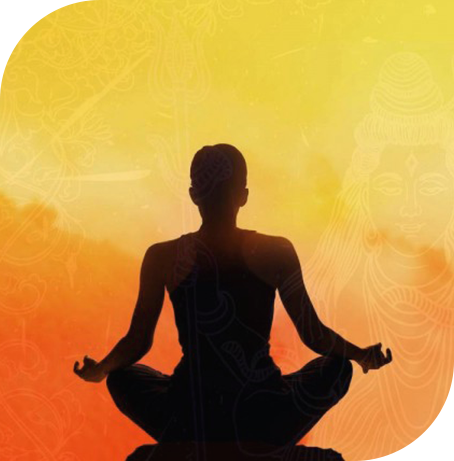Аюрведа тест (Практури)
Аюрведа тест или Пракрути парикша представлява анализ на природата на човешките същества.
Той се свързва с умението на човек да наблюдава своята природа чрез функционирането на собственото си тяло. В резултат може да се постигне осъзнаване на собствените нужди за:
- Поддържане на равновесие спрямо промените в климата и околната среда.
- Възстановяване на синергичната връзка между човешките енергии и природата.
- Поддържане на крепко физическо и емоционално здраве.

По-долу ще откриете таблица за тестване и определяне на енергийния тип, както и по-детайлно обяснение за значението на резултатите.
Как да определим своето Пракрути?
В таблицата по-долу за всяка наблюдавана характеристика има четири категории точки. Преценете до каква степен характеристиките ви отговарят на описаните особености при Пракрути, като използвайте по следното точкуване:
Не съм съгласен/на – 0 точки
Може би (вероятност 50/50) – 4 точки
Не мога да отрека – 2 точки
Перфектно съвпадение – 10 точки
Накрая съберете точките от всички наблюдавани характеристики за всеки различен тип Пракрути. Онзи тип, който събере най-голям общ брой точки, е реалният за съответния човек.
Таблица за тестване на Пракрути парикшана
Точка на наблюдение
Елементи
Телосложение
Кожа
Коса
Нокти
Стави
Глас (говор)
Очи
Храносмилане
Желание за вкус на храната
Тенденции във взаимоотношенията
Социално поведение
Психическо поведение
Сън
Емоционално поведение
Уникални характеристики
Сънища
Критерии за определяне на човешката природа
Въз основа на различни критерии, човешката природа може да бъде дефинирана като принадлежаща към няколко различни категории.
Въз основа на универсалните енергии
Въз основа на универсалните енергии (pancha maha bhuta – панча маха бута), телата се разделят на доминирани от следните видове Пракрути:
- Прутви (Prithavi) – тяло, повлияно от качествата на елемента Земя;
- Джала (Jala) – тяло, повлияно от качествата на елемента Вода;
- Ваю (Vayu) – тяло, повлияно от качествата на елемента Въздух;
- Акаш (Akaash) – тяло, повлияно от качествата на елемента Етер;
- Агни (Agni) – тяло, повлияно от качествата на елемента Огън.

Според теорията за трите доши
- Една енергийна сила:
Вата пракрути, Пита пракрути или Кафа пракрути.
- Две комбинирани енергии
Вата и Пита, Вата и Кафа, Пита и Вата, Пита и Кафа, Кафа и Вата, Кафа и Пита
- От всичките три енергии:
Санийпатик (Saniipatik – всички заедно): Вата, Пита и Кафа.
Въз основа на трите гуни
- Сатва
- Раджа
- Тамас
Тестът по-горе се базира на теорията за трите доши, като ви позволява да се позиционирате спрямо Вата, Пита и Кафа пракути.
Какво е Пракрути?
Това е уникалното съчетание от енергии по време на зачеването и раждането на човека, както и влиянието им върху енговата природна същност. Понятието може да означава:
„Създадено такова, каквото е“, тоест природа или естество.
„Страхотна форма“ или „Велико сътворение“.
Или „Нормално“, тоест без каквито и да било субективни сравнения с другите.
Идеята за Пракрути ни помага да разберем различните качества на човешката природа.
Защо трябва да определим своето Пракрути?
Концепцията за Пракрути парикша се основава на генерирането на самосъзнание, което ни предпазва от грешки, болести, физическо и емоционално страдание.
Аюрведа ни учи да бъдем проактивни и да превърнем невежеството в познание за себе си и света. Тя ни дава онова самосъзнание, което ни предпазва от бъдещи болестни процеси.
Нейната същност се изразява в максимата „превенцията е по-добра от лечението“, като едновременно с това ни дава знания как да лекуваме болестите.
Пракрути парикша ни учи, че всеки човек има уникална форма на съществуване в този свят.
А оттам – и различни нужди, които трябва да бъдат посрещнати, за да се постигне баланс и хармония.
Как да използваме знанията за своето Пракрути?
Резултатите от Аюрведа теста за определяне на доминиращите енергии могат да открият практическо приложение за:
1. Оценка на здравето
Пракрути парикша ни помага да разберем знаците, които получаваме от собственото си тяло.
Пример:
Ако човек от типа Кафа има проблеми със съня, той трябва да осъзнае, че състоянието е сериозно и да адресира проблема незабавно.
При този енергиен тип, сънят е знак за сила и ако слабият сън има висока оценка (според таблицата по-горе), това означава, че проблемът е по-дълбок.
2. Предразположеност към заболявания
Пракрути парикша дава индикация за слабите зони в човешкото тяло.
Пример:
При Вата пракрути ставите са уязвимо място и хората от този тип могат лесно да бъдат засегнати от ставни заболявания като артрит.
3. Насоки за начин на живот и хранене
Сезонните промени въздействат по различен начин на хората от различните типове Пракрути.
Информацията за Пракрути ни помага да увеличим имунната си сила, като изберем подходящите храна и начин на живот.
Пример:
Лятото ще повиши Вата, така че хората, доминирани от тази енергия, трябва да положат усилия да се адаптират чрез промяна в хранителния режим и начина на живот.
През лятото този тип хора трябва да приемат по-сладка храна и да приемат повече течности.
4. Провеждане на лечение
Когато се прилага режим на лечение, определянето на Пракрути е много важен елемент от възстановителния процес, тъй като помага за избора на правилното лекарство.
Пример:
Разстройства, свързани с нарушения на енергията Пита, се лекуват с помощта на пречистено масло, докато базираните на Кафа се повлияват успешно от мед.
5. Прогноза за протичане и изход от заболявания
Когато сме наясно как прониква в тялото и как протича болестта, можем да планираме лечението, да предвидим времетраенето му и да правим допускания за крайния резултат от него.
Пример:
Болестите, свързани с Вата пракрути, се развиват по-бързо. Тя е лесна за разбиране и планиране интензивността на лечението, ако знаем каква е силата на заболяването.
От друга страна, хората от типа Вата пракрути имат много нестабилен ум, затова лекарят трябва непрекъснато да им вдъхва увереност, за да постигнат успех в лечението.
